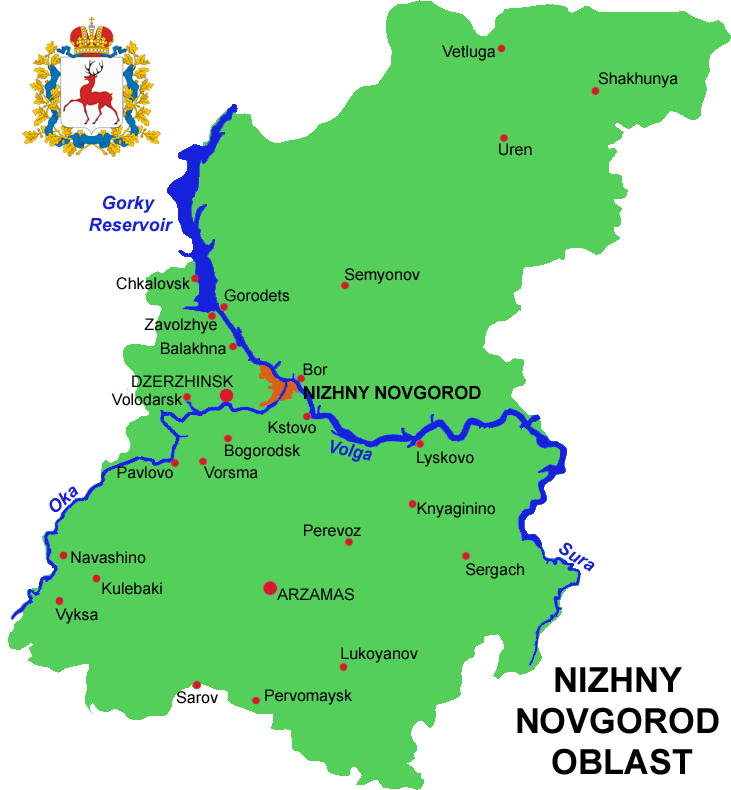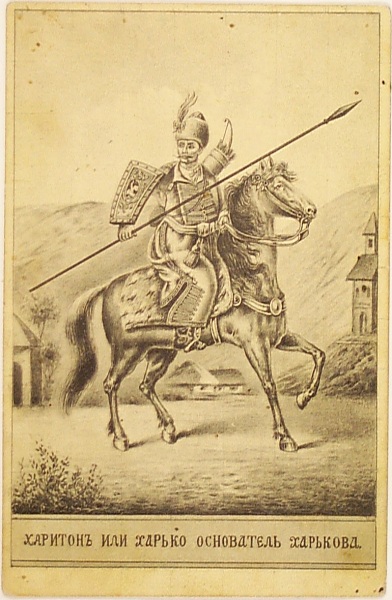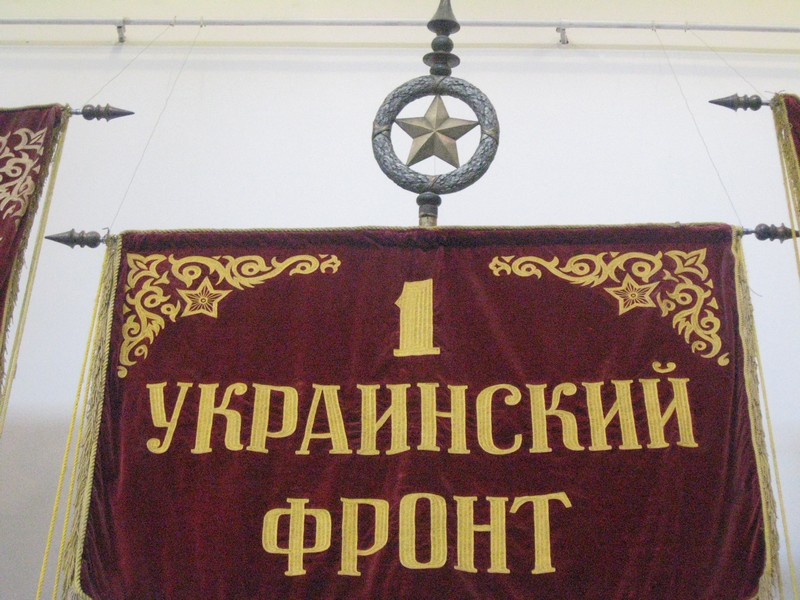|
Dmitry Timofeyevich Kozlov
Dmitry Timofeyevich Kozlov (russian: Дми́трий Тимофе́евич Козло́в; October 23 (November 4) 1896, Razgulyayka, now in Nizhny Novgorod Oblast – December 6, 1967, Minsk) was a Soviet military commander. Life 1914–1941 Born in the village of Razgulyayka, he left school in 1915 and joined the Russian Army at the rank of Praporshchik. He served in the First World War and graduated from officer training school in 1917. He moved to the Red Army in 1918, commanding a battalion then a regiment in the Russian Civil War. In December 1922 he became the commander of the 4th Turkestan Regiment, then of the 109th Regiment in September 1924. He moved to the staff in 1928, then to head the Kiev Infantry School in 1930. He then became the commander and commissar of 44th Rifle Division in January 1931. Next he became a general tactical lecturer at the RKKA Military Academy in December 1935, deputy commander of the troops in Odessa Military District in April 1940, hea ... [...More Info...] [...Related Items...] OR: [Wikipedia] [Google] [Baidu] |
Nizhny Novgorod Oblast
Nizhny Novgorod Oblast (russian: link=no, Нижегородская область, ''Nizhegorodskaya oblast''), is a federal subject of Russia (an oblast). Its administrative center is the city of Nizhny Novgorod. It has a population of 3,310,597 as of the 2010 Census. From 1932 to 1990 it was known as Gorky Oblast. The oblast is crossed by the Volga River. Apart from Nizhny Novgorod's metropolitan area (including Dzerzhinsk, Bor and Kstovo) the biggest city is Arzamas. Near the town of Sarov there is the Serafimo-Diveyevsky Monastery, one of the largest convents in Russia, established by Saint Seraphim of Sarov. The Makaryev Monastery opposite of the town of Lyskovo used to be the location of the largest fair in Eastern Europe. Other historic towns include Gorodets and Balakhna, located on the Volga to the north from Nizhny Novgorod. Geography The oblast covers an area of , which is approximately equal to the entire area of the Benelux countries or Czech Republ ... [...More Info...] [...Related Items...] OR: [Wikipedia] [Google] [Baidu] |
First World War
World War I (28 July 1914 11 November 1918), often abbreviated as WWI, was one of the deadliest global conflicts in history. Belligerents included much of Europe, the Russian Empire, the United States, and the Ottoman Empire, with fighting occurring throughout Europe, the Middle East, Africa, the Pacific, and parts of Asia. An estimated 9 million soldiers were killed in combat, plus another 23 million wounded, while 5 million civilians died as a result of military action, hunger, and disease. Millions more died in genocides within the Ottoman Empire and in the 1918 influenza pandemic, which was exacerbated by the movement of combatants during the war. Prior to 1914, the European great powers were divided between the Triple Entente (comprising France, Russia, and Britain) and the Triple Alliance (containing Germany, Austria-Hungary, and Italy). Tensions in the Balkans came to a head on 28 June 1914, following the assassination of Arch ... [...More Info...] [...Related Items...] OR: [Wikipedia] [Google] [Baidu] |
1896 Births
Events January–March * January 2 – The Jameson Raid comes to an end, as Jameson surrenders to the Boers. * January 4 – Utah is admitted as the 45th U.S. state. * January 5 – An Austrian newspaper reports that Wilhelm Röntgen has discovered a type of radiation (later known as X-rays). * January 6 – Cecil Rhodes is forced to resign as Prime Minister of the Cape of Good Hope, for his involvement in the Jameson Raid. * January 7 – American culinary expert Fannie Farmer publishes her first cookbook. * January 12 – H. L. Smith takes the first X-ray photograph. * January 17 – Fourth Anglo-Ashanti War: British redcoats enter the Ashanti capital, Kumasi, and Asantehene Agyeman Prempeh I is deposed. * January 18 – The X-ray machine is exhibited for the first time. * January 28 – Walter Arnold, of East Peckham, Kent, England, is fined 1 shilling for speeding at (exceeding the contemporary speed limit ... [...More Info...] [...Related Items...] OR: [Wikipedia] [Google] [Baidu] |
Soviet Invasion Of Manchuria
The Soviet invasion of Manchuria, formally known as the Manchurian strategic offensive operation (russian: Манчжурская стратегическая наступательная операция, Manchzhurskaya Strategicheskaya Nastupatelnaya Operatsiya) or simply the Manchurian operation (), began on 9 August 1945 with the Soviet invasion of the Japanese puppet state of Manchukuo. It was the largest campaign of the 1945 Soviet–Japanese War, which resumed hostilities between the Union of Soviet Socialist Republics and the Empire of Japan after almost six years of peace. Since 1983, the operation has sometimes been called Operation August Storm after U.S. Army historian David Glantz used this title for a paper on the subject. Soviet gains on the continent were Manchukuo, Mengjiang (the northeast section of present-day Inner Mongolia) and northern Korea. The Soviet entry into the war and the defeat of the Kwantung Army was a significant factor in the Japanese go ... [...More Info...] [...Related Items...] OR: [Wikipedia] [Google] [Baidu] |
Transbaikal Front
The Transbaikal Front (russian: Забайкальский фронт) was a front formed on September 15, 1941, on the basis of the Transbaikal Military District. Initially, it included the 17th and 36th armies, but in August 1942 the 12th Air Army was added to the front, and, finally, in June–July 1945 the 39th and the 53rd armies, the 6th Guards Tank Army, and the Soviet Mongolian Cavalry Mechanized Group under Issa Pliyev. From September 1941 to January 1945, the Transbaikal Front sent to the Soviet fronts in Europe about 300,000 personnel, 1,440 tanks, and 2,230 guns. On November 1, 1941, the Front included the 17th Army with the 36th and 57th Motor Rifle Divisions and the 61st Tank Division, and four air divisions (two fighter, one bomber, and the 84th Mixed Aviation Division), the 36th Army with the 94th Rifle Division, the 210th Rifle Division, the 51st Cavalry Division, and the 31st and 32nd Fortified Regions, the 111th Tank Division, two independent tank ba ... [...More Info...] [...Related Items...] OR: [Wikipedia] [Google] [Baidu] |
Leningrad Front
The Leningrad Front (russian: Ленинградский фронт) was formed during the 1941 German approach on Leningrad (now Saint Petersburg) by dividing the Northern Front into the Leningrad Front and Karelian Front on August 27, 1941. History The Leningrad Front was immediately given the task of containing the German drive towards Leningrad and defending the city from the approaching Army Group North. By September 1941, German forces to the south were effectively stopped on the outskirts of Leningrad, initiating the two-and-a-half-year-long siege of Leningrad. Although Finnish forces to the north stopped at the old Finnish–Soviet border, the Leningrad front suffered severe losses on the Finnish Front. From September 8, soldiers of the front were forced to conduct operations under the conditions of a blockade, with very little supply. Some supplies did reach the city however via the lake Road of Life. During the blockade, the front executed various offensive and de ... [...More Info...] [...Related Items...] OR: [Wikipedia] [Google] [Baidu] |
Kharkov
Kharkiv ( uk, Ха́рків, ), also known as Kharkov (russian: Харькoв, ), is the second-largest city and municipality in Ukraine.Kharkiv "never had eastern-western conflicts" '''' (23 October 2014) Located in the northeast of the country, it is the largest city of the historic region. Kharkiv is the of < ... [...More Info...] [...Related Items...] OR: [Wikipedia] [Google] [Baidu] |
Voronezh Front
The 1st Ukrainian Front ( Russian: Пéрвый Украи́нский фронт), previously the Voronezh Front ( Russian: Воронежский Фронт) was a major formation of the Soviet Army during World War II, being equivalent to a Western army group. Background During the first months of the war, officers from 16 regions of Ukraine conscripted about 2.5 million people from military enlistment offices. 1.3 million militiamen from the left-bank and southern regions of Ukraine fought against the enemy. In 1941, about 3.185 million citizens of the Ukrainian SSR were sent to the Soviet Red Army and Navy. Replenishing mostly the units of the Southern and Southwestern fronts, the Ukrainian people formed the basis of the 37th, 38th, and 40th armies; and the 13th and 17th rifle divisions. Due to the conscription of civilians, the proportion of Ukrainian citizens fighting in south-west Ukraine reached 50%. This significantly exceeded the percentage of Ukrainians from t ... [...More Info...] [...Related Items...] OR: [Wikipedia] [Google] [Baidu] |
Operation Trappenjagd
The Battle of the Kerch Peninsula, which commenced with the Soviet Kerch-Feodosia Landing Operation (russian: Керченско-Феодосийская десантная операция, ''Kerchensko-Feodosiyskaya desantnaya operatsiya'') and ended with the German Operation Bustard Hunt (german: Unternehmen Trappenjagd), was a World War II battle between Erich von Manstein's German and Romanian 11th Army and the Soviet Crimean Front forces in the Kerch Peninsula, in the eastern part of the Crimean Peninsula. It began on 26 December 1941, with an amphibious landing operation by two Soviet armies intended to break the Siege of Sevastopol. Axis forces first contained the Soviet beachhead throughout the winter and interdicted its naval supply lines through aerial bombing. From January through April, the Crimean Front launched repeated offensives against the 11th Army, all of which failed with heavy losses. The Red Army lost 352,000 men in the attacks, while the Axis suffered ... [...More Info...] [...Related Items...] OR: [Wikipedia] [Google] [Baidu] |
Russo-Finnish War
The Winter War,, sv, Vinterkriget, rus, Зи́мняя война́, r=Zimnyaya voyna. The names Soviet–Finnish War 1939–1940 (russian: link=no, Сове́тско-финская война́ 1939–1940) and Soviet–Finland War 1939–1940 (russian: link=no, Сове́тско-финляндская война́ 1939–1940) are often used in Russian historiographybr>В.Н. Барышников. От прохладного мира к Зимней войне. Восточная политика Финляндии в 1930–е годы. Санкт-Петербург, 1997.; О.Д. Дудорова. Неизвестные страницы Зимней войны. In: Военно-исторический журнал. 1991. №9.; Зимняя война 1939–1940. Книга первая. Политическая история. М., 1998. – ; ttp://www.otvaga2004.narod.ru/photo/winterwar/wwar1.htm М. Коломиец. Танки в Зимней войне 19 ... [...More Info...] [...Related Items...] OR: [Wikipedia] [Google] [Baidu] |
Lieutenant General
Lieutenant general (Lt Gen, LTG and similar) is a three-star military rank (NATO code OF-8) used in many countries. The rank traces its origins to the Middle Ages, where the title of lieutenant general was held by the second-in-command on the battlefield, who was normally subordinate to a captain general. In modern armies, lieutenant general normally ranks immediately below general and above major general; it is equivalent to the navy rank of vice admiral, and in air forces with a separate rank structure, it is equivalent to air marshal. A lieutenant general commands an army corps, made up of typically three army divisions, and consisting of around 60 000 to 70 000 soldiers (U.S.). The seeming incongruity that a lieutenant general outranks a major general (whereas a major outranks a lieutenant) is due to the derivation of major general from sergeant major general, which was a rank subordinate to lieutenant general (as a lieutenant outranks a sergeant major). In contrast ... [...More Info...] [...Related Items...] OR: [Wikipedia] [Google] [Baidu] |

.jpg)


.jpg)
